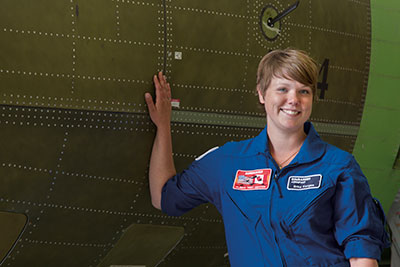
News
Leading Edge: A recruiting job half done?
The Canadian aviation and aerospace sectors are about to face significant challenges in replacing a retiring workforce.
May 6, 2013 By Matt Nicholls
The Canadian aviation and aerospace sectors are about to face significant challenges in replacing a retiring workforce. Less than 40 per cent of the Canadian population is made up of white males. Taken together, those two facts should be forcing a cultural shift in the recruiting styles of Canadian aviation companies, and of the training centres that feed our industry.
 |
|
| Changing culture and public perception is not a switch you flip when you see an empty recruiting pipeline.
|
Looking out over the full house at the first Careers in Aviation Expo, it’s not clear those changes are being made. The recruiting event was hosted by Wings and Helicopters magazines in Toronto in early April, and targeted high school and junior college students interested in the aviation and aerospace sectors. It drew a capacity crowd of more than 180, including 110 students.
The day included panel sessions on various career streams, including pilots, mechanics, engineers, management, navigation, sales and marketing, the military, and manufacturing. Young attendees could visit the dozens of exhibits from schools and potential employers, and try their hand on a FlightSafety International flight simulator.
In organizing the event, we deliberately chose two Elsie MacGill Northern Lights Award winners as panellists, including Bombardier’s Erika Kangas (photo above). The luncheon keynote speaker was also an Elsie MacGill Northern Lights Award winner, as well as a successful entrepreneur and bush pilot. The education panel included two women, both pilots.
Sadly, they outnumbered the women in the audience. Other than exhibitors, there was a grand total of three young women in the audience – two very keen grade nine students, and a pilot trainee.
Missing the mark
Why the preponderance of testosterone? We promoted the event through school guidance counsellors, sending posters and postcards that prominently featured several young women. We followed up with similar ads in Tonight, Toronto’s commuter newspaper, as well as radio ads in the weeks leading up to the event (it’s hard to be more gender neutral than radio). Our website landing page and registration page showed seven youth walking away from a helicopter, four of which are young women. And yet the results speak for themselves.
Of course, Wings and the industry it serves are not alone in struggling to increase participation from the other 60 per cent of the population. Originally for political reasons, but increasingly out of practicality, Canada’s armed forces have pursued gender and race equality targets for decades now. And while they regularly face criticism for falling short, they are at least facing up to the challenge.
Currently, there are no formal restrictions to the roles women can pursue in the armed forces, a long-standing policy that has in many ways made Canada an example for other developed nations. The RCAF has openly and actively recruited women, visible minorities and aboriginals for years, striving to meet very public goals of 25, 12, and three per cent respectively. Still women make up just 15 per cent of our armed forces, visible minorities and aboriginals five and two per cent.
The relatively low numbers for all three groups in the armed forces should be a wake-up call to our industry as we slowly realize our need to broaden our recruiting base. Changing culture and public perception is not a switch you flip when you see an empty recruiting pipeline.
Nor are we alone in targeting these groups for future recruits. Forest products, mining, trucking and construction, for starters, are all looking to this demographic to fill their own staffing needs. If we’re not proactive, we will face the coming demographic challenge of still recruiting from our current shrinking talent pool.
Regs and more regs
As an industry, we love regulations. OK, maybe not, but we do need to understand them. With that in mind, Wings is launching a new column by David Olsen to track changes in regulations and how they may affect us.
Air Surveillance will look at the reasons behind new or changing regulations, ask hard questions about why, or even whether, we need them, and judge how well they reflect the reality under which we work on a daily basis. If you have specific regulations you’d like us to look into, let me know.